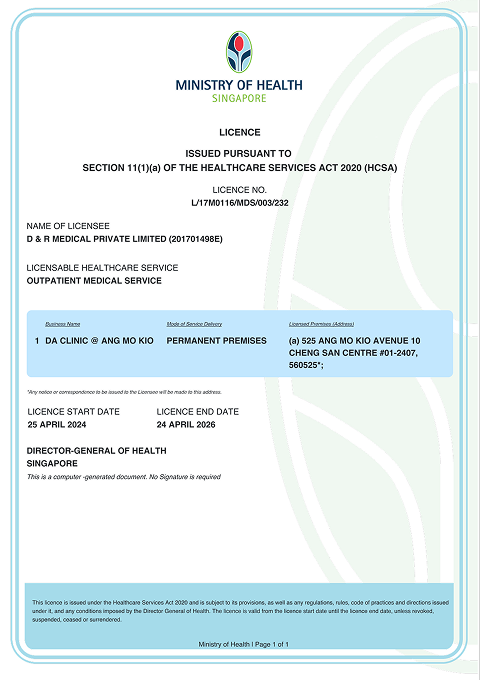High blood pressure (hypertension) has long been called the “silent killer” — and for good reason. It typically develops without any warning signs, yet can quietly cause damage across multiple organs for years before symptoms show up.
In Singapore, 1 in 4 adults aged 30 to 69 has high blood pressure — and the numbers climb significantly with age. But here’s the twist: it’s not just about avoiding salt or taking pills. There are smarter, more holistic ways to stay in control, many of which start in your kitchen or living room.
We spoke to Dr Hanson Wong, a general practitioner with Doctor Anywhere, who shares some lesser-known food and lifestyle strategies to help manage and even prevent high blood pressure — especially relevant in our Southeast Asian context.
🩺 The Real Risks of High Blood Pressure
“Most people think of hypertension as just a ‘number’ to monitor. But what many don’t realise is that it’s a slow-acting, systemic disruptor,” says Dr Wong.
Uncontrolled high blood pressure increases your risk of:
- Heart disease and stroke: By damaging artery walls and forcing the heart to work harder.
- Kidney failure: The kidneys’ delicate filters can become scarred and inefficient.
- Vision loss: From pressure damage to blood vessels in the eyes.
- Cognitive decline: Studies show a link between midlife hypertension and a higher risk of dementia later on.
What’s particularly concerning is that many younger adults — often stressed, sleep-deprived, and fuelled by high-sodium hawker fare — are showing elevated blood pressure in their 30s and 40s.
🥗 7 Local Foods That Help Regulate Blood Pressure
We know to cut back on salt. But what should we add more of? Here are five under-the-radar foods that are easily found in Singapore — and supported by science.
1. Kang Kong (Water Spinach)
This humble leafy green, often found in hawker centre stir-fries, is surprisingly powerful when it comes to heart health. Kang kong is rich in potassium and magnesium — two minerals that help regulate blood pressure by balancing out the effects of sodium and supporting blood vessel relaxation.
“Potassium helps the kidneys eliminate excess sodium, which can lower blood pressure. Magnesium, meanwhile, supports vascular tone and keeps blood vessels from constricting,” explains Dr Wong. “Kang kong offers both, in a form that’s cheap and widely available — especially in Southeast Asia.”
2. Tofu
Far from bland, tofu is a nutrient-dense, plant-based protein that’s rich in isoflavones, which may help improve artery flexibility and reduce blood pressure.
“In Asian diets, tofu often replaces red meat — and that swap alone lowers saturated fat intake, which supports overall heart health,” Dr Wong adds.
3. Avocados
Now widely available in supermarkets, avocados are packed with monounsaturated fats and potassium. These fats help reduce LDL (bad) cholesterol and improve endothelial function — the ability of blood vessels to dilate properly.
Avocados are naturally flavourful, so there’s no need to add too many sauces or condiments. Keep it simple — a squeeze of lime or a sprinkle of sesame seeds works well.
4. Red or Brown Rice
White rice is a staple, but it’s also high in glycaemic index and stripped of fibre. In contrast, red or brown rice retains its bran layer, giving you more magnesium, fibre, and antioxidants — all linked to lower blood pressure.
“It’s not about cutting rice entirely — it’s about making smarter swaps,” says Dr Wong. “Even a 50/50 mix with white rice can help.”
5. Dark Chocolate (at least 70% cocoa)
Yes, dessert lovers — there’s good news. Dark chocolate contains flavonoids, plant compounds that help blood vessels relax by boosting nitric oxide production in the body. This improves circulation and supports healthier blood pressure levels.
The key is to go for chocolate with at least 70% cocoa and keep portions small — just a few squares a day. It’s a treat, not a free pass. But as far as indulgences go, this one has some science behind it.
6. Air-Popped Popcorn
Often mistaken as a junk food, popcorn is actually a whole grain, rich in fibre and polyphenols — antioxidants that can support heart health. When prepared without butter or excess salt, it becomes a light, satisfying snack that won’t spike your sodium levels.
People are surprised to learn popcorn can be heart-healthy. But do skip the overly salty or too-sweet movie-theatre version. Just pop it at home, toss with a pinch of paprika or nutritional yeast, and you’ve got a smart snack.
7. Greek Yoghurt with Fruit
Unlike regular yoghurt, Greek yoghurt is strained to remove most of its whey, resulting in a creamier texture and higher protein content — nearly double that of conventional yoghurt. It also tends to be lower in sugar and higher in key minerals like calcium and potassium, both of which are linked to healthier blood pressure.
Top it with bananas or berries for a sweet, potassium-rich finish — or try it with sliced dragon fruit and a sprinkle of chia seeds for a Southeast Asian twist.
💪 2 Exercises That Don’t Feel Like ‘Exercise’
Forget hour-long gym sessions. Dr Wong recommends these low-effort, high-impact moves that anyone can do at home — even in the office.
1. Seated Marching
It looks simple — lifting your knees alternately while seated — but it activates circulation, engages core muscles, and gets the heart rate gently up.
“It’s ideal for people who sit for long hours or seniors with mobility issues. Just one minute every hour can make a difference,” says Dr Wong.
2. Wall Push-Ups
Stand facing a wall, arms shoulder-width apart, and do slow push-ups against the wall. This tones your arms, improves posture, and slightly elevates your heart rate.
“We often forget that strength training helps blood pressure too — not just cardio,” Dr Wong adds. “Wall push-ups are beginner-friendly and reduce the risk of injury.”
👩⚕️ The Bigger Picture: It’s About Everyday Habits
Dr Wong stresses that blood pressure control isn’t about one ‘superfood’ or miracle move — it’s the cumulative effect of daily choices.
“If there’s one thing I wish more people understood, it’s that you can feel perfectly fine and still have dangerously high blood pressure,” he says. “That’s why regular check-ins and small, sustainable changes matter.”
✅ Start Today: Check Your BP, Then Take Action
Whether you’re managing hypertension or simply want to prevent it, start by checking your blood pressure at home or at a clinic. Then, build better habits into your week — one food swap, one 60-second march at a time.
Need support managing your blood pressure?
📲 Book a teleconsult with a DA doctor now.







